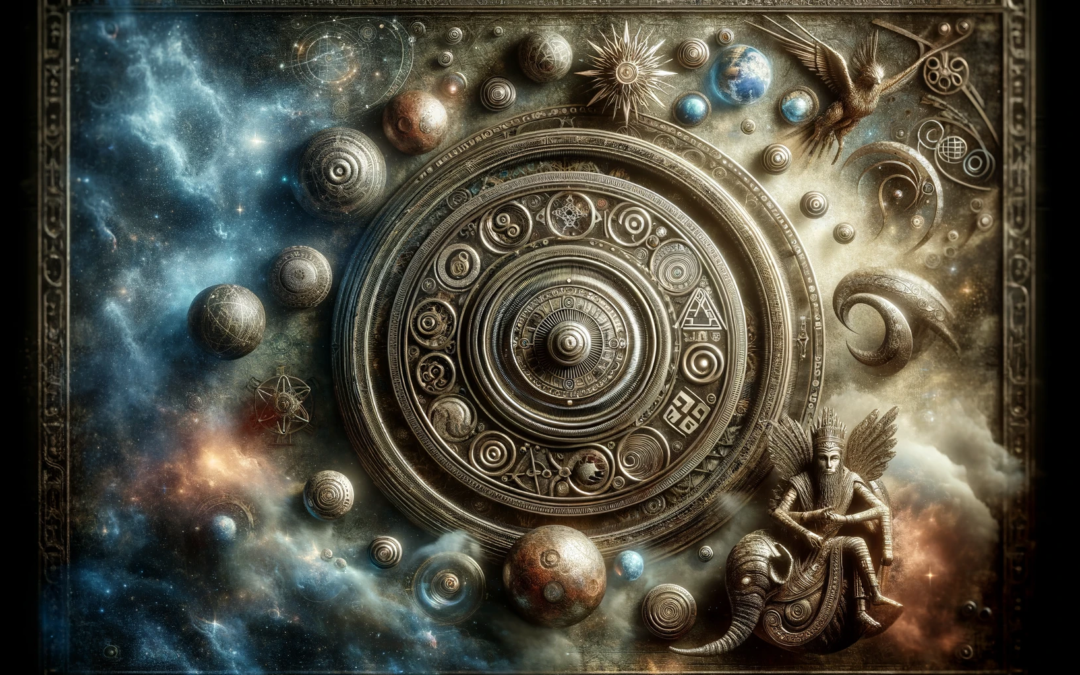In the depths of history, where myth and reality intertwine, recently unearthed artifacts dating back 1200 years have opened a window into a world long vanished. These relics, discovered in an undisclosed location, bear enigmatic symbols and images that narrate the cosmogonic myth of creation, hinting at the practices of an unknown pagan cult.
This discovery, while rooted in the distant past, resonates intriguingly with our current explorations in artificial intelligence (AI). The artifacts, comprising of intricately carved stones, metallic objects, and fragments of what appear to be ceremonial attire, depict a narrative of creation that challenges our understanding of early mythological interpretations. The imagery, rich in symbolism, portrays a universe emerging from chaos, guided by deities and cosmic forces that seem to transcend the familiar pantheons of Norse, Greek, or Roman mythologies.
What sets these relics apart is not just their age or the unknown cultural origins, but the strikingly advanced conceptualization of the universe they portray. It suggests a civilization with a deep understanding of astronomical phenomena and a philosophical outlook that might have been centuries ahead of its time.
This advanced worldview is particularly relevant when we consider the current trajectory of AI development. In the realm of AI, we often speak of creating intelligence that can rival or surpass human capabilities. This pursuit, in many ways, mirrors the ancient myths of creation where beings of immense power forge worlds and life forms.
The artifacts, with their complex portrayal of creation, seem to foreshadow humanity’s perennial quest to understand and possibly recreate the essence of intelligence and consciousness. The parallels between these ancient beliefs and modern AI development are striking. Just as the depicted deities in these artifacts wielded the power of creation, modern AI researchers aim to create machines that can learn, adapt, and perhaps one day, possess a form of consciousness.
The ethical and philosophical questions this raises are immense. Are we, like the practitioners of this long-forgotten pagan cult, attempting to reach into the realm of gods? Furthermore, the discovery challenges our perception of historical technological advancement. If a civilization 1200 years ago could conceptualize such a sophisticated view of the universe, what does it say about the potential of human intellect and creativity? It raises the question of whether there have been other peaks of cognitive and technological advancement in human history that we are yet unaware of.
As we stand on the brink of a new era in AI, these ancient artifacts serve as a reminder of the cyclical nature of human endeavor. They echo a past where the lines between myth, religion, and science were blurred, much like today, where AI blurs the lines between natural and artificial intelligence.
The discovery also poses a tantalizing question: could the creators of these artifacts have envisioned a future where intelligence is not just a gift of the gods but a creation of humanity? The narrative depicted in these relics, while shrouded in the mystery of an unknown cult, might be prophetic in its portrayal of creation and intelligence.
In conclusion, the 1200-year-old artifacts are not just archaeological treasures; they are a testament to the human imagination and its timeless fascination with creation and intelligence, both divine and artificial. As we advance in our understanding and development of AI, we may find that our journey echoes the myths and beliefs of our ancestors more closely than we ever imagined.










